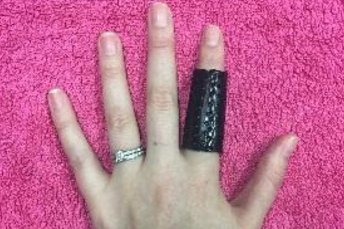
What causes a central slip injury?
Central slip injury is often caused by a joint dislocation or forced flexion of the proximal interphalageal joint (PIP joint). This causes rupture of the central slip, which is part of the extensor tendon that straightens the PIP joint. The tendon can tear away from the bone or pull a small fracture fragment with it.
What are the symptoms?
Loss of extension of the middle joint of the finger. If left untreated a boutonniere deformity can occur, where the PIP joint rests in a flexed position and the distal interphalangeal joint (DIP joint) sits in hyperextension. Without the central slip to straighten the PIP joint, other parts of the extensor mechanism collapse creating a deforming force on the finger joints.
How is a central slip injury treated?

Education, splinting, skin care and exercises are required for a period of 6-8 weeks. If the tendon was cut with a sharp object, surgery may be required. After surgery, hand therapy includes wound care, splinting, scar massage, oedema management and active range of movement exercises according to tendon repair protocol.
Your Hand Therapist can show you how to safely don and doff the splint for hygiene whilst maintaining the integrity of the healing central slip tendon. DIP joint flexion exercises are important to maintain the natural balance of the mechanism and prevent a boutonniere deformity.
If you have any questions about a central slip injury, or about another injury to the fingers, hands, wrist, and arms and would like to book an appointment, get in touch today.
